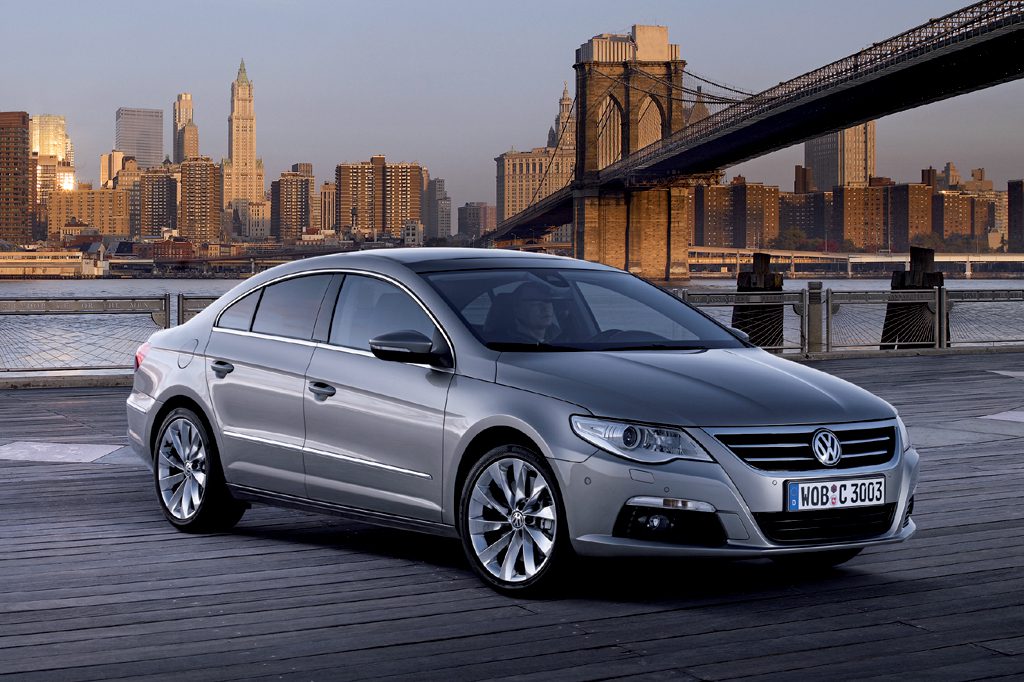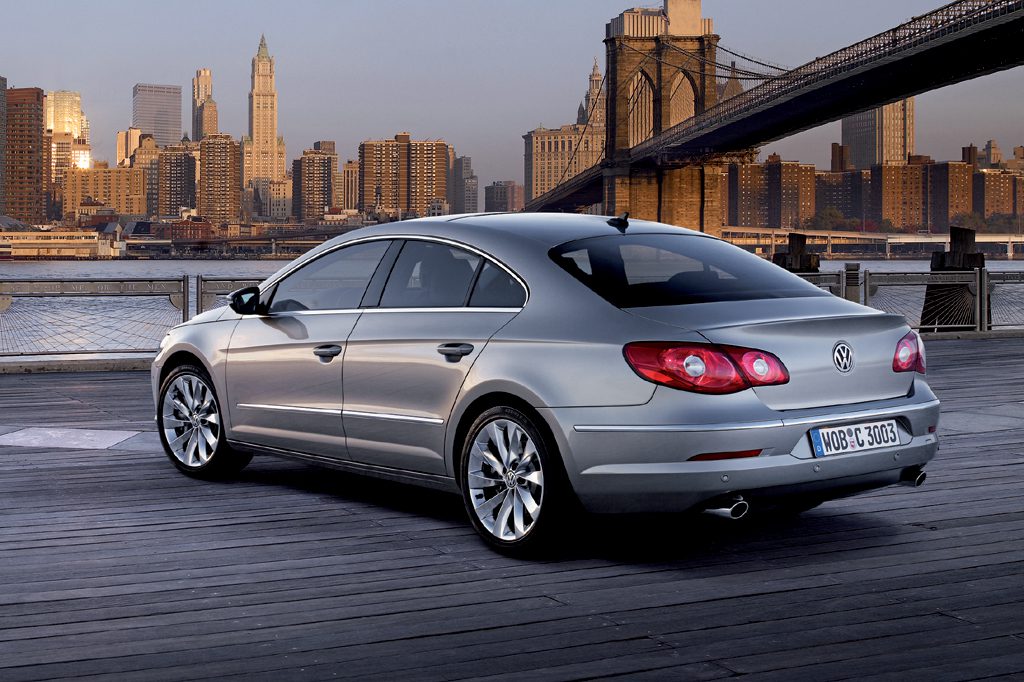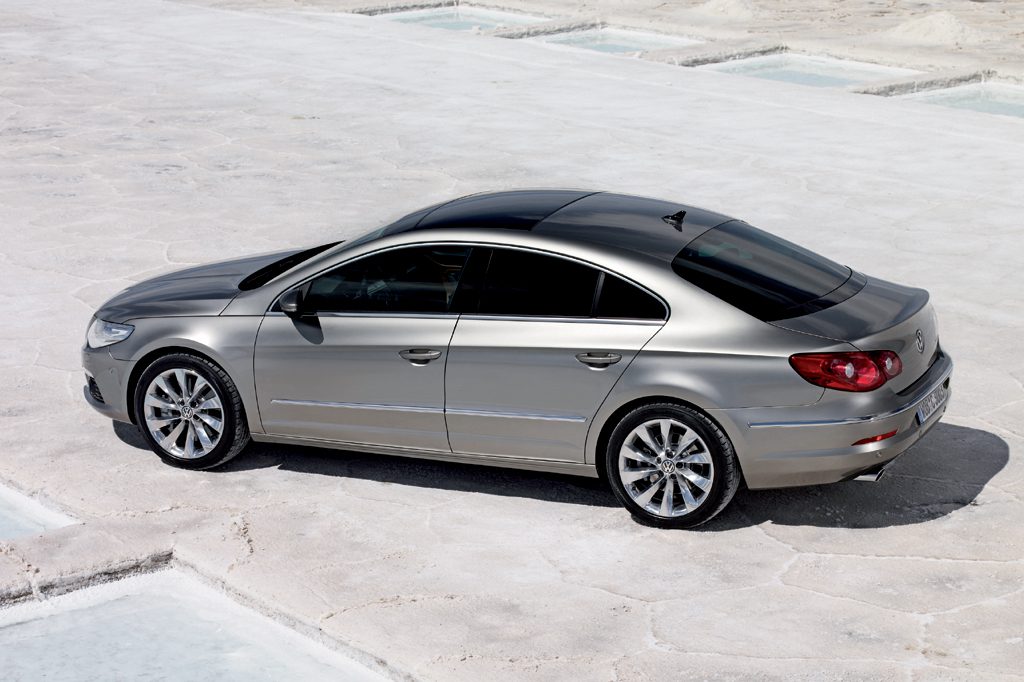| Premium midsize car; Built in Germany |
|
|
| Good condition price range: $6,700 – $31,400* |

2009 Volkswagen CC Front

2009 Volkswagen CC Rear

2009 Volkswagen CC Interior

2009 Volkswagen CC Profile
| Pros: |
|
| Cons: |
|
Volkswagen’s CC appeals for its strong and refined turbocharged four-cylinder engine, impressive ride and handling, top-notch interior design, and standout styling. Good four-cylinder fuel economy is an added bonus. If you’re willing to sacrifice five-passenger capacity and pay a price premium over traditional Passat models for the sake of style, check out the Best Buy CC. Otherwise, its Passat sibling may better suit your needs. If you prefer a VR6 model and live in the snowbelt, the 4Motion edition would be a sensible choice. Four-cylinder CCs have been holding their value a bit better than V6 models, and may therefore be comparatively higher-priced as used cars.
Overview
For 2009, Volkswagen introduced a new premium midsize sedan that shared its basic design with the German automaker’s Passat. Unlike that traditional-styled sibling, the four-door CC had a sleeker, coupe-like roofline and seated four occupants instead of the usual five. CC sedans came in four trim levels: Sport, Luxury, VR6 Sport, and VR6 4Motion. Two engines were available. Standard on Sport and Luxury models was a 200-horsepower 2.0-liter turbocharged four-cylinder. In Sport versions, that engine teamed with a six-speed manual or six-speed automatic transmission. Luxury CCs were automatic-only. Powering VR6 Sport and VR6 4Motion versions was a 280-horsepower 3.6-liter V6, paired solely with a six-speed automatic. Volkswagen’s automatic transmission could be manually operated using the floor shifter in four-cylinder models, or via steering-wheel paddles in V6 versions.
Four-cylinder models and the VR6 Sport came only with front-wheel drive; the VR6 4Motion sedan had all-wheel drive. Standard safety features included antilock brakes, traction control, an antiskid system, curtain side airbags, and front side airbags. Rear side airbags were optional. Leather upholstery, a power pop-up-only sunroof, and front and rear obstacle detection were standard on all models except the four-cylinder Sport. An optional Technology Package, available for all except that four-cylinder Sport, included a navigation system with a rearview camera. Rivals included the Nissan Maxima, Pontiac G8, and Volvo S60, along with the Cadillac CTS.
Yearly Updates
| 2010 CC Little changed for the 2010 model year, other than the substitution of a six-speed automated-manual transmission-VW’s Direct Shift Gearbox (DSG)-for the previous conventional automatic. DSG was an option for the four-cylinder Sport model, but standard on the four-cylinder Luxury sedan. Bluetooth hands-free phone capability now was standard in all models. Leather upholstery, dual-zone automatic climate control, and a sunroof were standard on all models except the four-cylinder Sport. |
| 2011 CC The 2011 Volkswagen CC got a revised feature and model lineup. CC was available in Sport, Lux, and AWD Executive 4Motion trim levels. The latter two replaced the Luxury, VR6 Sport, and VR6 4Motion trims. |
| 2012 CC The model lineup for the 2012 Volkswagen CC added three trim levels: sporty R-Line, and luxury-oriented Lux Plus and Lux Limited. There were few other changes aside from a freshened interior. |
| 2013 CC The 2013 Volkswagen CC received updated exterior styling with new front and rear fascias. Interior tweaks included a reworked rear seat which now allowed for three rear passengers rather than the previous two. New features included standard bi-xenon headlamps and a driver-seat massage function for the top-line VR6 4Motion Executive model. Finally, there were new Sport Plus and VR6 Lux trim levels. |
| 2014 CC The 2014 Volkswagen CC gained a new 2.0T Executive trim level. Sport and R-Line models now came with a rearview camera, and the top-line VR6 Executive model now included keyless access, push-button start, new 18-inch alloy wheels, and a motion-activated trunk opener. Volkswagen’s Car-Net communications system/smart phone app was newly available too. |
